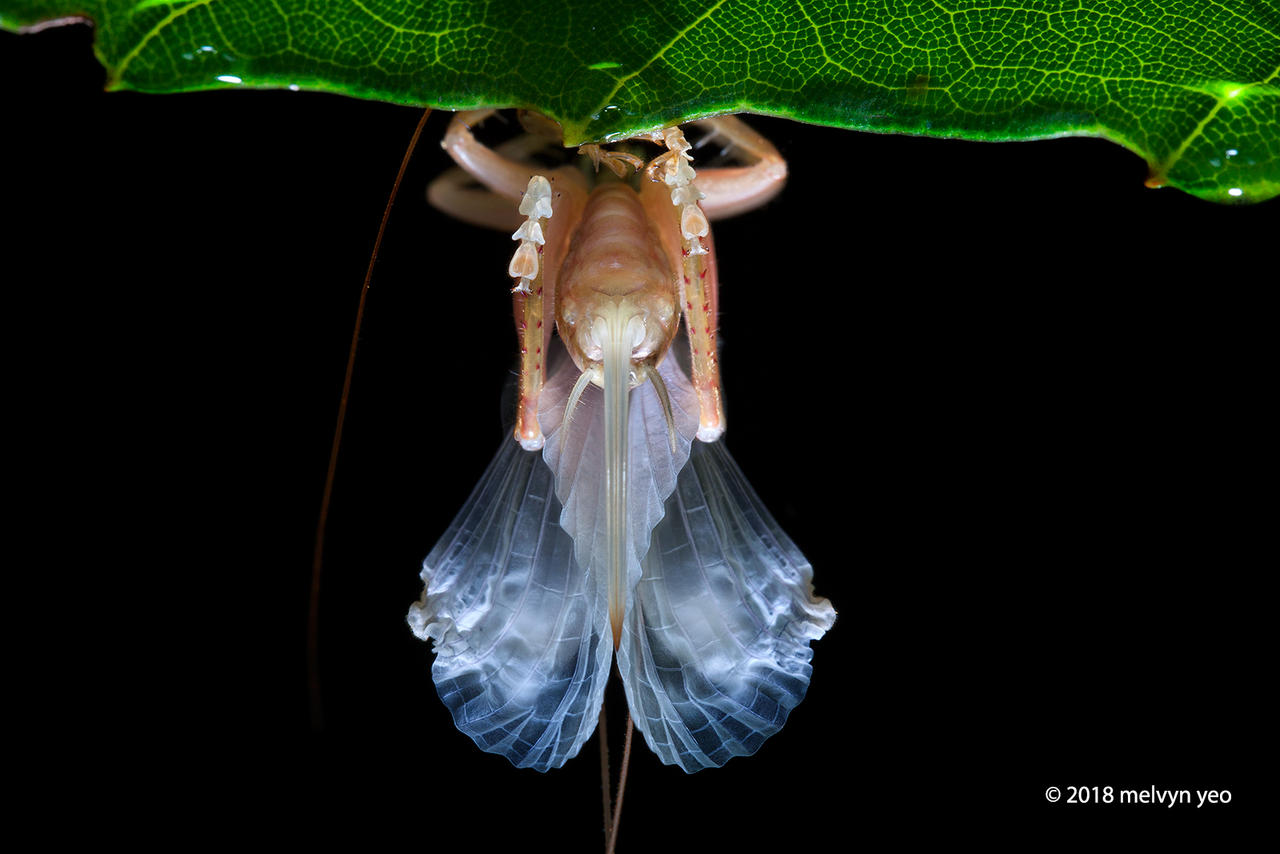ShopDreamUp AI ArtDreamUp
Deviation Actions
Description
Predatory tree cricket with a new night dress. Taken at night in Singapore forest.
Another view c1.staticflickr.com/1/978/4113…
Quote from en.wikipedia.org/wiki/Tree_cri…
Tree crickets are insects of order Orthoptera. These crickets are in the subfamily Oecanthinae of the family Gryllidae. This subfamily contains seven genera.
They live in trees and shrubs, for which they are well camouflaged. These crickets are nocturnal and can be found on every continent except Antarctica.
In Europe Tree Crickets have been expanding northwards and had reached the island of Jersey in the Channel Islands by 2010 and in August 2015 the first population was found in mainland England at Dungeness in Kent, where hundreds of males were present[1]
Tree crickets as well as most other crickets have two pairs of wings. The fore wings are located closer to the head and are hard and leathery in appearance. The hind wings are located aft of the fore wings and are the wings it uses for flight. When the cricket is not in flight the fore wings fold back to cover the hind wings. The bodies of tree crickets are long and skinny with a coloration that matches their habitat. They have large powerful legs used for jumping. Their heads contain two antennae which can sense both touch and odor and compound eyes which are inherent in all Orthoptera. (Harvard.edu 2008)
Like other species of cricket they produce their calling song by rubbing the ridges of their wings together. The chirp (or trill) of a tree cricket is long and continuous and can sometimes be mistaken for the call of a cicada or certain species of frogs. While male tree crickets have the ability to call, females lack the ability (Brown 1997). This call is then received by other tree crickets in the area through a system called sender-receiver matching. For example, a male tree cricket will produce a mating call at a specific range of frequencies. This allows females to be able to pick out the males mating call without becoming distracted or confused by other calls from other species of insects. This range of frequencies is called a carrier frequency. Tree crickets are unique in the way they use carrier frequencies because the range of frequencies changes according to the temperature. Due to this, female tree crickets have tympanum (hearing organs) that can receive a much wider range of frequencies than most other insects (Mhatre 2011). Female tree crickets seem to prefer calls at the lower range of frequencies indicating the presence of a large male. This preference for larger males is could be because larger males produce a greater amount of sperm thus increasing the females chances of offspring.
They live in trees and shrubs, for which they are well camouflaged. These crickets are nocturnal and can be found on every continent except Antarctica.
In Europe Tree Crickets have been expanding northwards and had reached the island of Jersey in the Channel Islands by 2010 and in August 2015 the first population was found in mainland England at Dungeness in Kent, where hundreds of males were present[1]
Tree crickets as well as most other crickets have two pairs of wings. The fore wings are located closer to the head and are hard and leathery in appearance. The hind wings are located aft of the fore wings and are the wings it uses for flight. When the cricket is not in flight the fore wings fold back to cover the hind wings. The bodies of tree crickets are long and skinny with a coloration that matches their habitat. They have large powerful legs used for jumping. Their heads contain two antennae which can sense both touch and odor and compound eyes which are inherent in all Orthoptera. (Harvard.edu 2008)
Like other species of cricket they produce their calling song by rubbing the ridges of their wings together. The chirp (or trill) of a tree cricket is long and continuous and can sometimes be mistaken for the call of a cicada or certain species of frogs. While male tree crickets have the ability to call, females lack the ability (Brown 1997). This call is then received by other tree crickets in the area through a system called sender-receiver matching. For example, a male tree cricket will produce a mating call at a specific range of frequencies. This allows females to be able to pick out the males mating call without becoming distracted or confused by other calls from other species of insects. This range of frequencies is called a carrier frequency. Tree crickets are unique in the way they use carrier frequencies because the range of frequencies changes according to the temperature. Due to this, female tree crickets have tympanum (hearing organs) that can receive a much wider range of frequencies than most other insects (Mhatre 2011). Female tree crickets seem to prefer calls at the lower range of frequencies indicating the presence of a large male. This preference for larger males is could be because larger males produce a greater amount of sperm thus increasing the females chances of offspring.
Image size
1600x1067px 752.93 KB
Make
Canon
Model
Canon EOS 5D Mark II
Shutter Speed
1/160 second
Aperture
F/16.0
Focal Length
100 mm
ISO Speed
200
Date Taken
Apr 30, 2018, 11:29:58 PM
Sensor Size
10mm
© 2018 - 2024 melvynyeo
Comments9
Join the community to add your comment. Already a deviant? Log In
This looks positively impressive!





































